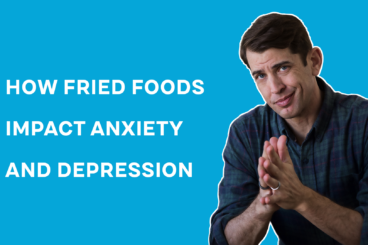Image courtesy Flickr/Steffen Zahn

Pundits express outrage at these numbers, asking, “How can half the world be mentally ill?” But given that brain disorders are the largest health care challenge facing modern medicine, you should understand more about the studies behind these headlines…and why these numbers are the tip of the iceberg.
Some years back, the World Health Organization developed a new tool for measuring the effect an illness has on a population. Historically, the health community worried about mortality rates – whether an illness was fatal. This prioritizes illnesses like heart disease, cancer, and stroke in both research and prevention strategies. WHO’s new measurement focuses on the disability caused by a disease, the way being illness negatively impacts one’s ability to work and care for themselves. The new measurement is called a DALY, or Disability Adjusted Life Year.
Take, for example, a heart attack that strikes a man at age 60. His capacity for work will be reduced to some extent, but he only has five years left at the job. Comparatively, mental disorders like depression, addiction, and schizophrenia most often strike in the late teens and early twenties. With unsuccessful treatment (or, more likely, lack of treatment), someone struck by major depressive disorder at age 18 has the risk for a reduced capacity for his entire career. Maybe this doesn’t sound as serious as a heart attack – but over time, it is much more costly and debilitating.
Many psychiatric brain-based disorders like depression, anxiety, and alcohol abuse tend to be a relapsing and remitting illnesses, but relapses are more common without proper treatment. Worrisome for sure, since up to 80 percent of people struggling with depression don’t seek treatment. People with untreated depression struggle with low moods, poor self-esteem, crying fits, weight changes, hopelessness, poor concentration — all symptoms that make work a challenge and are at the root of the disability caused by this illness.
Just a quick word on treatment, as I see a lot of people relieved when they hear about the many possible interventions we use today in mental health. People often conflate “treatment” and “medication”. Patients with brain-based disorders may need medications, but let’s not forget that talk therapy, exercise, and improved nutrition all can help treat these illnesses and reduce disability.
By approaching illnesses through their DALY, we get a clearer picture of the disorders that are most expensive to a society. And what this survey of Europe demonstrates is a consistent trend of the last two decades. Brain-based disorders make up the largest piece of the Burden-of-Illness Pie. The authors of the European study put these costs in perspective in a related study that looked at the cost of brain-based disorders for Europe. In 2010, brain-based illnesses like anxiety disorders, depression, dementia, Parkinson’s disease, schizophrenia cost 798 billion euros.
Of course, everyone is different. While there are successful people with brain disorders who have done well without treatment, there are also smokers who never get lung cancer. A measurement like the DALY is for the general population, so we can always find outliers and exceptions.
When we extend the measurement of the impact of brain illnesses from disability into the home — having a mother with untreated depression or caring for a parent with mild dementia — we see another part of the huge toll paid for untreated brain disorders.
So what’s the take home? First, mental illnesses and brain-based disorders are very prevalent and costly to society. Hopefully studies like these will help decrease the stigma. Trust me, if you are struggling with something like anxiety or your mood, you aren’t alone. Second, let’s focus on prevention and a great way to reduce your personal risk of many brain disorders is to optimize your diet for brain health. Third, think about disability – if you have symptoms or a diagnosis, what is the impact on your daily functioning? That is a great litmus test for yourself.



